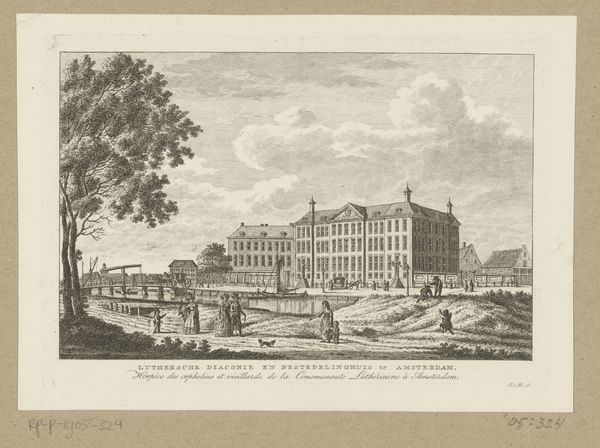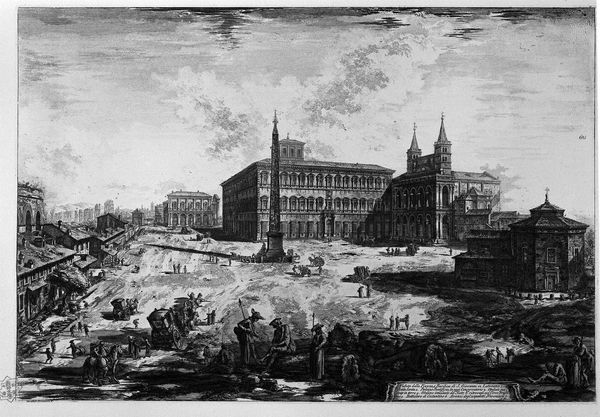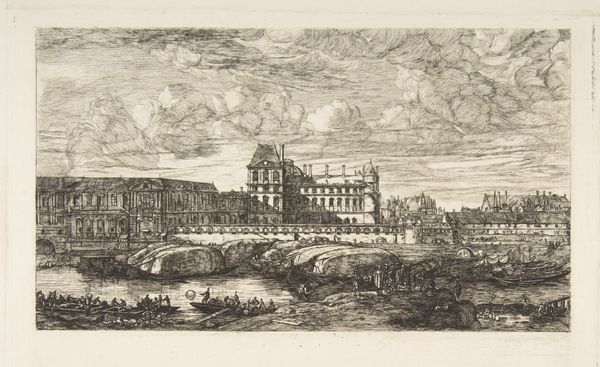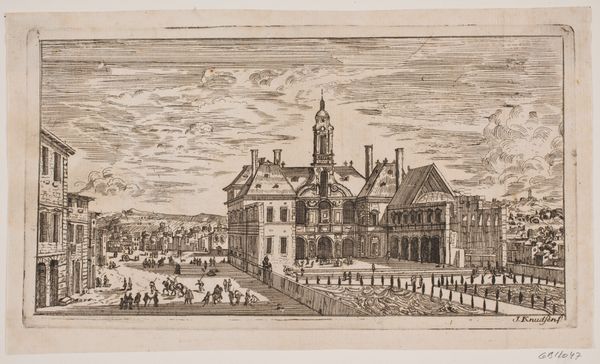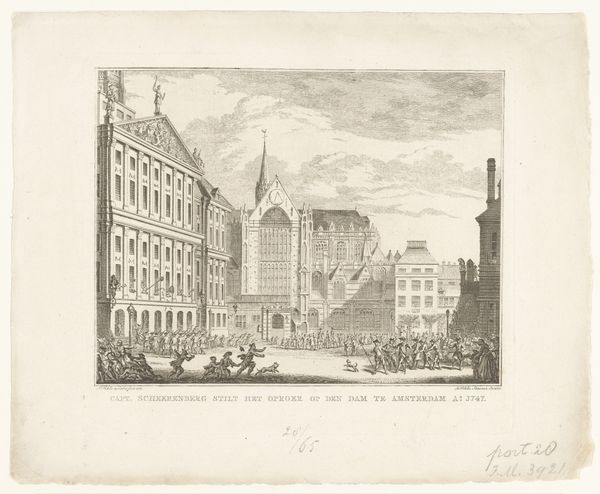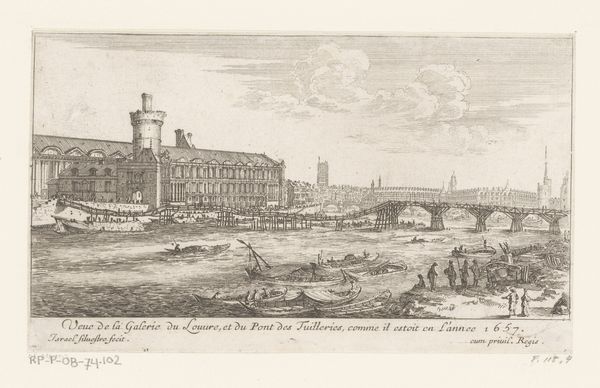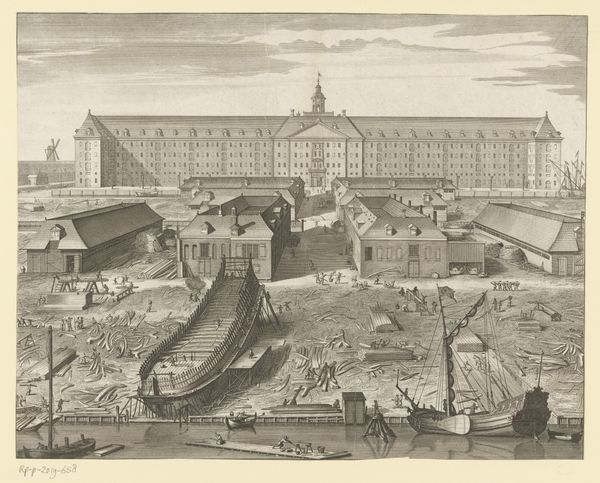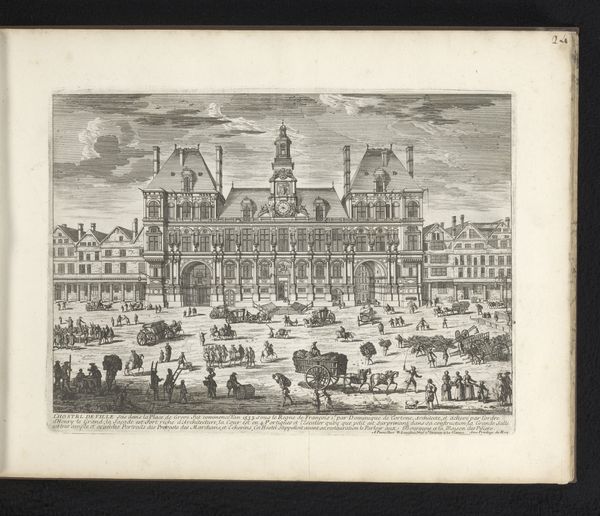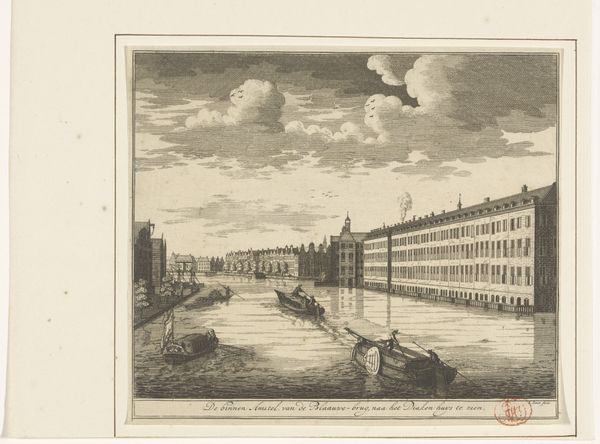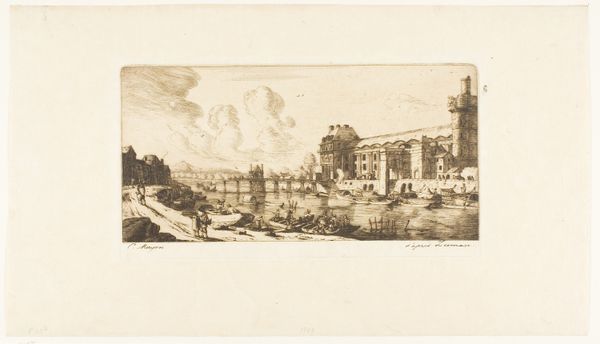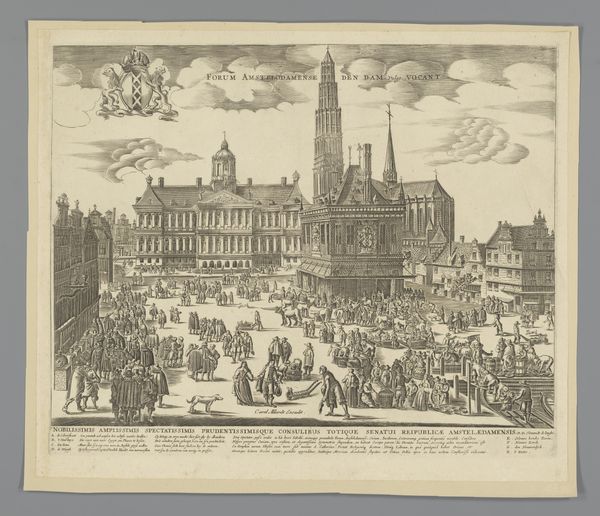
View of the Piazza and Basilica of St. John Lateran 1775
0:00
0:00
Dimensions: 19 3/16 x 27 11/16 in. (48.74 x 70.33 cm) (plate)22 x 31 1/8 in. (55.88 x 79.06 cm) (sheet)
Copyright: Public Domain
Editor: We're looking at Giovanni Battista Piranesi’s "View of the Piazza and Basilica of St. John Lateran," from 1775. It's a print made using etching, engraving, and drypoint. I’m struck by the contrast between the grandeur of the architecture and what seems like a really chaotic everyday life in the foreground. What do you see in this piece? Curator: I see a careful orchestration of power and the everyday. Piranesi isn’t just depicting a Roman piazza; he’s showing us a staged negotiation of space. Notice how the obelisk, a symbol of ancient Egyptian and later papal authority, looms over the figures in the foreground. It raises questions about who controls the narrative, the perspective from which history is being written – or etched, in this case. What do you make of the people depicted? Are they passive observers or active participants? Editor: That's a great point about the power dynamic. The people almost seem like they're going about their business, seemingly unaware or unbothered by the imposing structures behind them. They're so small in comparison. Curator: Exactly. It speaks to a form of resilience, perhaps even resistance. The Baroque era was a time of immense social stratification. Piranesi’s work, whether consciously or not, highlights this tension. Consider the intended audience: who was meant to view this print, and what message might they have taken away from it regarding the relationship between the Church, the state, and the populace? Editor: So, it's more than just a pretty picture of Rome; it's a commentary on the social hierarchy of the time. Curator: Precisely. By understanding the historical and social context, we see how art engages in complex dialogues about power, identity, and lived experience. Editor: That completely changes how I view this artwork. Thanks, this has been enlightening. Curator: And for me as well! It's through these dialogues that we continuously re-evaluate our understanding of art and its place in history.
Comments
No comments
Be the first to comment and join the conversation on the ultimate creative platform.
